Nothing compares to the beauty of a real marble fireplace. That natural marble brings a classic touch to any home and gives your living area a timeless elegance. But, like all items, that beautiful marble fireplace needs to be properly looked after to ensure it holds up over time. Just as with cleaning a stone fireplace, maintaining a marble fireplace requires special care and attention.
That’s why we’re here to share a few easy cleaning and maintenance tips on keeping your marble fireplace looking fabulous for years and years to come. With a little bit of cleaning and some thoughtful upkeep, your marble fireplace will remain a statement piece in your home and a source of continued joy.
- Preparing to Clean Your Marble Fireplace
- How to Clean Your Marble Fireplace With Regular Cleaning Products
- Removing Stains From a Marble Fireplace
- Bringing Back the Shine to a Dull Marble Fireplace
- Finishing Up and Maintaining Your Marble Fireplace
- Responses to Frequently Asked Questions with Detailed Explanations
- References
Cleaning a marble fireplace can be done with warm water and a mild all-purpose cleaner. Be sure to use a soft, non-abrasive cloth when wiping down the surface to prevent any damages.
“Emphasize that for any marble surface, particularly fireplaces, regular dusting is key – but it’s the type of product you use that can make all the difference. Avoid acidic cleaners and opt for a specially designed marble cleaner to maintain the luster and longevity of the marble. Also, remember to seal your marble fireplace once a year to prevent staining and keep it looking its best. Regular upkeep will not only maintain its beauty but also save you expensive restoration work in the long run.”
Ekaterina Kovalenko, Stone Restoration Specialist
Preparing to Clean Your Marble Fireplace
Before you begin cleaning your marble fireplace, it is important that you take the necessary precautions to ensure a successful and safe cleaning process. Preparing to clean your marble fireplace involves undertaking the following steps:
1. Clear out any clutter that exists in and around the fireplace such as vases, books, or furniture. This will give you plenty of room to work without having to move items constantly.
2. Turn off the gas if you have a gas-powered marble fireplace and make sure it is completely cool before beginning your cleaning session.
3. Cover up the floor area with a cloth drape or mat so that if there are any spills or splashes, they will be caught before causing damage.
4. Evaluate the condition of the heating element of the fireplaces and examine it for any cracks or chips in the marble, as well as loose mortar or broken joints. Ensure any issues are properly addressed before starting to clean.
5. Gather all of your cleaning materials, such as a vacuum, specialised stone cleaner, sponges and mops, soft bristle brushes and buckets. It is also advised that you wear protective eyewear while cleaning, plus gloves to protect your hands and skin from caustic chemicals used in cleaning agents.
Having taken these precautions, you can now begin gathering all of your cleaning materials for cleaning your marble fireplace efficiently and safely for years of enjoyment.
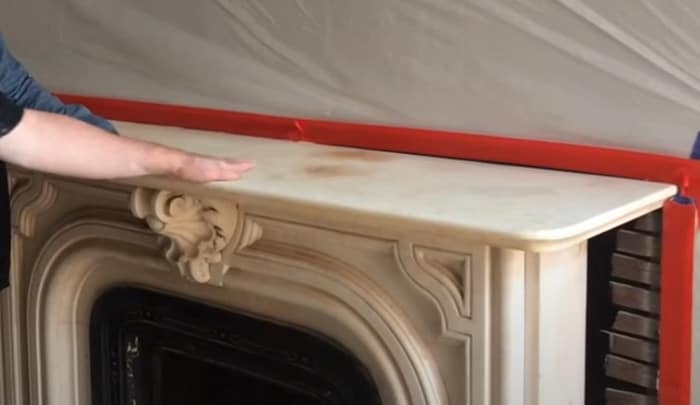
Essential Points
Before cleaning a marble fireplace, it is important to take the necessary precautions including clearing out clutter and turning off the gas, if applicable. Additionally, it is recommended that you cover the floor area with a cloth or mat, evaluate the condition of the heating element, and gather all necessary materials such as a vacuum and stone cleaner. Finally, protective eyewear and gloves should be worn while cleaning for added safety.
Gather All of Your Cleaning Materials
Gathering all of the necessary cleaning materials is often the first step in any successful cleaning project. Whether you decide to use a vinegar-based cleaner or a commercial product, make sure to have all of the supplies on hand before beginning. It is important to inspect any area rugs or furniture near your marble fireplace for potential damage and move them away from the area before you begin cleaning.
When it comes to choosing a cleaning solution for your marble fireplace, there are several options available. On one hand, some prefer natural cleaners such as white vinegar mixed with water since these are more affordable than their store bought counterparts. However, it is important to test this type of cleaner on an inconspicuous area of your fireplace before using it on the entire surface as vinegar can be too acidic for some surfaces.
On the other hand, using a commercial cleaner specifically designed for marble fireplaces can be beneficial as they are typically pH balanced and formulated specifically for stone surfaces. Using such products eliminates the need to do a patch test and helps ensure no harm will come to your marble fireplace while simultaneously offering the best clean.
No matter which route you decide on, having all of your supplies ready will significantly reduce stress further down the line when it comes time to actually clean your marble fireplace. With your cleaning materials gathered and inspected, you’re ready for the next step; cleaning your marble fireplace with regular cleaning products.
How to Clean Your Marble Fireplace With Regular Cleaning Products
When it comes to cleaning your marble fireplace, you should understand that there are two general approaches: using regular cleaning products or a mild soap and water solution.
Using regular cleaning products can be a quick way to tackle grime and dirt build-up on your marble fireplace, but it is important that you read the label and make sure the product is suitable for natural stone surfaces. When in doubt, opt for mild cleaners that are designed specifically for cleaning marble surfaces; these cleaners should be non-abrasive and free of bleach and acidic components. However, even when using these milder cleaners, it is still important to test the cleaner on a small area before applying it over all of the marble surface.
Advocates of using mild soap and water solutions argue that simple washing with a soft cloth can be just as effective at removing dirt without damaging the marble surface. To clean with this solution, simply use warm water with a few drops of dishwashing liquid, dip a soft cloth into the mixture and wring it out thoroughly before wiping down your marble fireplace. Unlike certain home cleaning products, this technique is both safe and effective, but may require more elbow grease than store-bought sprays or cleaners.
No matter which approach you choose, always use caution and perform spot tests to ensure that the cleaning solution won’t damage or discolor your marble fireplace.
Now that we have discussed how to clean marble fireplaces with regular cleaning products, let’s move on to discuss how to clean a marble fireplace with a mild soap and water solution.
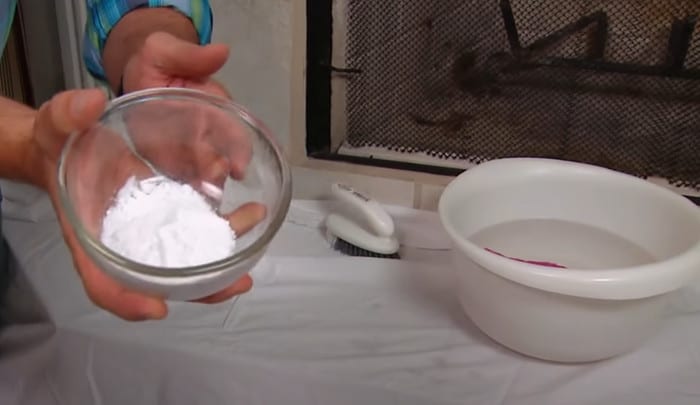
How to Clean a Marble Fireplace with a Mild Soap and Water Solution
Cleaning a marble fireplace with a mild soap and water solution is one of the most popular methods used when it comes to general cleaning and maintenance. This method is also effective for maintaining a stone fireplace, ensuring it stays in top condition. This method has been proven safe and effective for marble surfaces, however it can be difficult to achieve a deeper, more thorough clean if debris such as dirt or soot buildup on your fireplace. For best results, ensure that the water you use is not too hot, as too much heat may cause unnecessary damage to the surface of the stone.
The positive aspects of cleaning with a mild soap and water solution include its non-toxic, chemical-free nature, making it much gentler on the delicate surface of your marble fireplace than other store-bought cleaners. Additionally, many people find this simple recipe easier to use than commercial cleansers or stronger solutions. However, there are some drawbacks to using soap and water – diluting your soap correctly is key in order to get results without damaging your marble surface further. If not mixed carefully enough, you could end up with a hazy film left behind from minerals inside the water, which would require more intense scrubbing for removal.
With that being said, if you decide on this method for cleaning your marble fireplace, it’s important to ensure that you are diluting your soap properly and not leaving any residue behind. Following up with a good rinse is also necessary in order to avoid any lingering effects from the soap solution. Once this step has been completed satisfactorily, you can begin onto the next step – cleaning the marble fireplace with vinegar and baking soda.
The next section will discuss how to clean a marble fireplace with a vinegar and baking soda solution – two popular household ingredients known for their natural cleaning power and effectiveness in difficult tasks.
- According to This Old House, a marble fireplace should be cleaned using an acid-free, pH neutral cleaner such as simple dish soap and warm water.
- It is recommended that when cleaning a marble fireplace, you use a soft cloth to avoid scratching or damaging the surface of the marble.
- Marble International recommends avoiding any type of abrasive or chemical cleaning products on marble surfaces as they can cause discoloration or etching in the stone.
How to Clean a Marble Fireplace with a Vinegar and Baking Soda Solution
Cleaning a marble fireplace with a vinegar and baking soda solution is an effective and inexpensive way to remove dirt and debris from the surface. The mild acidity of the vinegar combined with the natural abrasive action of baking soda can tackle light surface dirt and grime, as well as built-up soot and creosote that has accumulated over time.
To start, mix two parts white vinegar with one part baking soda in a small bowl, stirring to combine. Use a clean sponge to apply the solution directly to the fireplace surface, gently rubbing away any visible dirt. Take care not to rub too hard, as this could cause damage to the marble’s delicate finish. Allow the mixture to remain on the tile for 10-15 minutes before rinsing it off with clear warm water and a sponge or soft cloth. Any remaining grime or stain can be removed using an old toothbrush.
Although some people have had success cleaning their marble fireplace using this method, there are some drawbacks. Water alone may discolor or corrode marble if left on the surface for too long, and vinegar may cause greater damage if it is applied too frequently or in overly concentrated amounts. Therefore, it is important to use caution when selecting cleaning products for your marble fireplace surface, ensuring that they are safe for use on marble surfaces.
After cleaning your marble fireplace with a vinegar and baking soda solution, you will likely want to move onto removing any stubborn stains that remain. Next, we’ll discuss how to effectively remove stubborn stains from a marble fireplace surface…
Removing Stains From a Marble Fireplace
When dealing with stains on a marble fireplace, it is important to take into consideration the type of stain that you will be working with. Depending upon the nature and severity of the stain, different cleaning products or methods may need to be used to effectively remove it from the surface of the marble. Care must also be taken when attempting to remove stains from marble in order to prevent any damage or discoloration to the material.
One approach for removing a stain from a marble fireplace is to make use of commercial cleaning products that are specifically designed for marble stone surfaces. These can often work to quickly and easily break down common household stains like coffee, ink and lipstick, as well as oil and grease-based spills. In these cases, simply follow the directions provided on the product label in order to ensure safe removal of stubborn spots and stains.
Additionally, using natural ingredients such as baking soda paste or lemon juice can also be effective when attempting to lighten or erase certain types of stains. However, it should be noted that using acidic substances like vinegar, lemon juice, and even baking soda may cause damage to softer types of marble if not used correctly. Thus, it is recommended to test an inconspicuous spot before applying one of these methods over an entire area.
No matter which method you choose, patience and care should ultimately be taken when attempting to remove a stain from your marble fireplace in order to preserve its original beauty and condition for years of enjoyment.
Finally, it is always important to seal your marble fireplace after cleaning any spills or stains in order to protect against future residue buildup or staining that could occur due to regular use by family members or guests. With that in mind, the following section will discuss how to effectively remove oil and grease stains from marble.
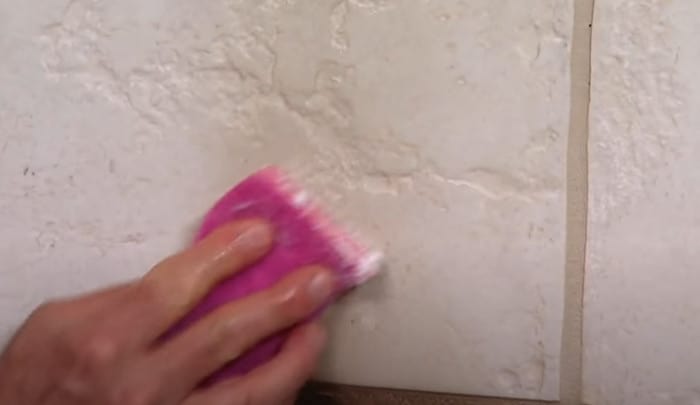
How to Remove Oil and Grease Stains from Marble
Oil and grease stains on marble fireplaces can be difficult to remove. However, it is possible to restore your marble fireplace to its former beauty with some care and patience. This process is similar to cleaning a cast iron fireplace, which also requires special attention to stubborn stains.
The first step in removing oil and grease stains is to soak up as much of the oil or grease as possible. This can be done by applying absorbent paper towels or a towel over the stain, pressing firmly and leaving for a few minutes. Carefully lift the paper towels or towel being careful not to spread the stain further. Repeat this process until as much of the oil or grease is removed as possible.
Once most of the oil or grease has been absorbed, carefully apply a powder poultice to the stain using either talcum power, corn starch, fuller’s earth, or whiting. Make sure to read the manufacturer’s instructions with each product before use — some may require water or other liquids to activate them while others are ready-to-use powders. Gently spread an even layer of your chosen powder over the stained area; it should be slightly thicker than a pancake batter consistency. When it dries, gently brush away any excess powder — do not rub. For particularly stubborn stains, wait an extra day and apply a second layer of poultice before brushing away any excess again.
One opposing argument suggests that chemical cleaners should be used when dealing with oil and grease stains on marble fireplaces; however, most experts do not recommend this option because harsh chemicals can dull and damage the marble surface. To reduce harsh chemical exposure, use only nonchemical cleaners such as mineral spirits and make sure you properly dilute them according to package instructions and wipe them off once they have done their job.
Using either a poultice method or nonchemical cleaner option you can successfully remove oil or grease stains from your marble fireplace without damaging its surface! Once you have achieved your desired results transition into the next section by announcing: “Now that we’ve covered how to remove oil and greasestains form marble, let’s move on to discuss how we can remove rust stains from marble”.
How to Remove Rust Stains from Marble
Removing rust stains from marble can be a challenge, and no two situations are exactly the same. There are several options to consider when removing rust spots from your marble fireplace, and each offers its own advantages and disadvantages.
The most commonly recommended method is to use a commercial rust-removal product made specifically for natural stone. Before apply any chemical agent, always test it in an inconspicuous area to make sure it doesn’t cause discoloration or other damage to your marble. This may also void any warranties on the product or surface. After testing, use the product according to the manufacturer’s instructions. Additionally, ensure that adequate ventilation is available while using these types of products, as most contain hazardous materials such as hydrochloric acid which can cause serious harm if inhaled or ingested.
Another option for getting rid of rust stains is to create a paste with baking soda and water and apply it directly onto the stained area. Baking soda is a mild abrasive, so it’s important not to scrub too hard and potentially damage the marble surface. Allow the paste to sit for 15-20 minutes before wiping away with a damp cloth.
A third option is to use a poultice created with hydrogen peroxide, vinegar and powdered whiting (which is available at most hardware stores). Mix enough of these ingredients into a thick paste so they form a cream-like consistency before applying it onto the affected area of your marble fireplace. Cover the paste with plastic wrap overnight, then use a damp cloth to wipe away any remaining residue in the morning.
Finally, if you’ve exhausted all other avenues, there are specialty cleaning services that specialize in stain removal on natural stone surfaces like marble fireplaces. These services can be costly but may offer some relief if you’re unable to remove stubborn stains on your own.
No matter which method you choose for removing rust stains from your marble fireplace, be sure to take extra precaution when handling chemical agents and abrasives that could damage this delicate material. Leading into the next section about bringing back the shine of dull marble fireplaces should follow the same guidelines as described above – taking care not to scrub too hard or use too strong of cleaners in order to avoid dulling or discoloring your beautiful marble surface over time.
Bringing Back the Shine to a Dull Marble Fireplace
Bringing back the shine to a dull marble fireplace can be a tricky job. Many will debate the benefits of using either a chemical-based polish or an enzyme-based cleaner. This process is not unlike cleaning a slate hearth, which also requires careful consideration of cleaning methods to maintain its appearance. On one hand, chemical-based polishes may make a dark marble surface brighter, but long-term use can cause yellowing or discoloration. Enzyme-based cleaning is gentler on the surface and does not have any overt staining or discoloration effects. It also requires less maintenance, as it does not need to be reapplied regularly. However, some argue that enzyme-based cleaners are less effective at shining up dull surfaces. The best approach when trying to bring back the shine to a dull marble fireplace is to combine both approaches: apply a chemical-based polish followed by an enzymatic cleaner and buff with a soft cloth. This combination will bring back the luster of the marble without damaging it.
To complete the process of bringing back the shine to a dull marble fireplace, it is necessary to properly polish and buff the surface. In the next section we will explore how to effectively polish a marble fireplace for years of enjoyment.
How to Polish a Marble Fireplace
Polishing a marble fireplace is a great way to bring out the unique and beautiful features of the marble, giving a deep shine and restoring its luster. However, it is important to understand that this type of work should only be done by an experienced professional. It can be difficult to successfully apply the correct polish without expert guidance, and mistakes can easily lead to irreparable damage.
On one hand, DIY-ers may opt for store-bought solutions that are generally safe but often lack the strength or quality needed to restore your marble fireplace effectively. On the other hand, professionals often have access to higher-quality chemicals and expertise in their application. They will usually charge more than the cost of purchasing cleaning supplies at the local store, but they are unlikely to cause any costly damage.
No matter which approach you choose, it’s important to thoroughly clean your marble first before any polishing takes place. To clean and remove built-up wax or grease from your marble fireplace, start with ammonia-free soap such as dishwashing liquid mixed with warm water. After washing down the surface of your marble fireplace and letting it dry for 24 hours, consider sanding down the surface before polishing it with a professional-grade polish specifically formulated for your particular marble surface.
Now that we’ve covered how to polish a marble fireplace, let’s move on to finishing up and maintaining your marble fireplace for years of enjoyment.
Finishing Up and Maintaining Your Marble Fireplace
Once you have completed the deep clean and repair of your marble fireplace, it is essential to take the right steps to keep it in its best condition. To finish up, you may want to wax the marble fireplace with a marble cleaner or home-made beeswax blend. This helps seal the porosity of the marble and creates a protective barrier against stains and dirt.
In addition to waxing your marble fireplace, you should also consider installing a fire shield or cover over it to protect it when not in use. Fire shields are easy to install and come in a variety of sizes and materials. In addition, they help prevent air from escaping through cracks and crevices which can damage the material overtime.
Once invested in those steps, there are several other general maintenance tips for cleaning and maintaining your marble fireplace for years of enjoyment. Among these include dusting the mantle, using gentle natural products like vinegar or lemon juice on less soiled areas; taking regular precautions against dust build up; refraining from using abrasive cleaners; avoiding acidic cleaners; and never using harsh chemicals on the surfaces of your marble fireplace. Additionally, it is important to inspect your fireplace regularly for any cracks, chips or surface damage that may need repair or resurfacing work done.
The debate around how much heat a marble fireplace can withstand continues to cause arguments among professionals in the industry. On one hand, some will argue that if proper care is taken along with periodic professional cleaning, a fireplace can last many years even with consistent exposure to heat. Others believe that marble fireplaces are commonly weakened by high temperatures causing them to become brittle over time, thus requiring an ongoing maintenance plan and replacement more frequently than other materials used in fireplaces (such as cast iron).
At the end of day, what matters most is finding a balance between making sure your heat output isn’t too significant for your particular material while at the same time getting enough heat from your fire source. Given this understanding, one must develop an appropriate heating plan so that their marble fireplace stays beautiful for many years to come.

Responses to Frequently Asked Questions with Detailed Explanations
Are there any extra precautions I should take when cleaning a marble fireplace?
Yes, there are additional precautions that should be taken when cleaning a marble fireplace. First, it is important to use gentle cleaning products that are specifically designed for marble surfaces. Harsh chemical cleaners can damage the surface of the marble and dull its color. Additionally, never use any scrubbing tools when cleaning the fireplace; use only a soft cloth or sponge. Finally, avoid using bleach or other strong acids when cleaning the marble fireplace; these substances can strip away the natural oils and cause irreparable damage. By following these simple steps, you will ensure your marble fireplace remains in great condition for many years to come.
What products should I use to clean a marble fireplace?
When it comes to cleaning a marble fireplace, you should use non-abrasive and pH-neutral products. When selecting a product, make sure it is specifically made for marble surfaces to ensure it won’t damage the material. A stone soap or mild dishwashing liquid mixed with warm water is often the best option for cleaning marble fireplaces. Be sure to rinse with fresh water after each step and wipe dry with a lint-free cloth or sponge. For extra protection against dirt and grime, use a sealant on the marble surface once your fireplace has been cleaned. This will help repel dirt and prevent staining.
What are the specific steps to cleaning a marble fireplace?
1. Prepare the workspace: Make sure to clear out the area around the fireplace, removing any objects or furniture within a two foot radius.
2. Protect surrounding areas from dust and debris: Cover any nearby walls or surfaces with plastic sheeting and tape it down.
3. Dust your marble fireplace: Using a soft dry cloth, lightly dust off the surface of your marble fireplace to remove any loose dirt and particles that may have built up over time.
4. Clean with a mild soap solution: Create a solution using a mild soap, warm water, and a few drops of dishwashing liquid. Dip a soft sponge into the mixture and gently rub it over the entire surface of your marble fireplace, rinsing periodically with clean water as needed.
5. Scrub away stains: If there are stubborn stains or areas of discoloration on your marble fireplace, make a paste out of baking soda and water, apply it to the affected area, then scrub it gently with a soft-bristled brush.
6. Dry completely: Once you have finished cleaning your marble fireplace, use a dry cloth to make sure all areas are completely dry before moving on to further steps.
7. Seal your marble fireplace: After it has been cleaned and dried completely, apply a good quality sealant to protect the stone from stains and degradation caused by heat or moisture.
References
https://qualitygraniteandmarble.com/what-type-of-stone-is-best-for-a-fireplace-surround
https://www.limestone.com/about-us/limestone-learning-center/7-top-benefits-of-a-marble-fireplaces/

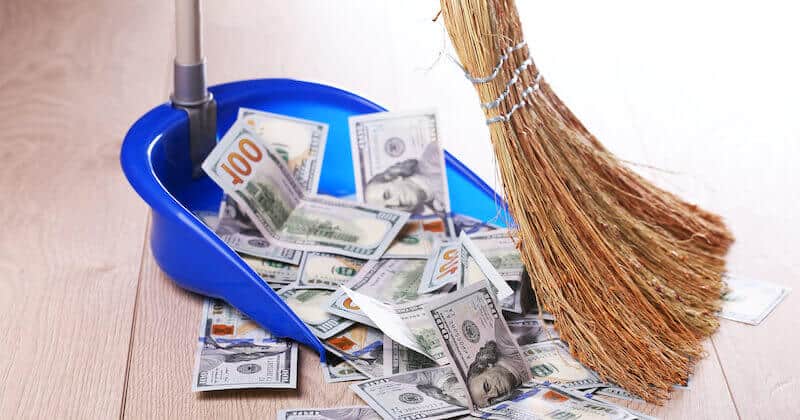
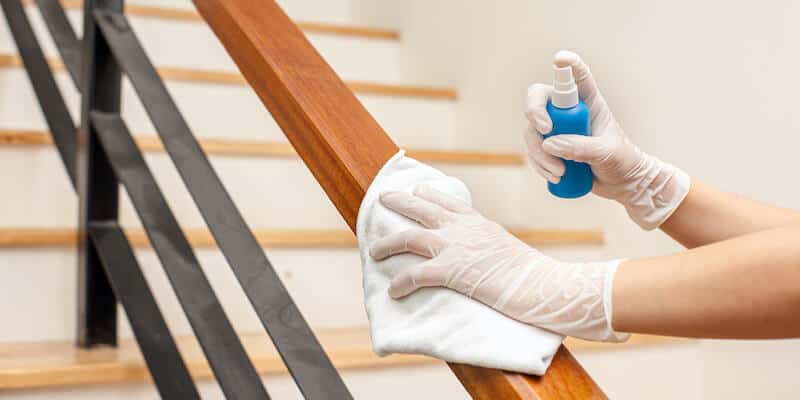


Marble, being calcium-based, reacts violently with acids causing discolouration and I’ve seen enough damage from homeowners using cleaning techniques they found online. Neutral pH cleaners are a safe bet for marble. My motto? The gentler, the better when it comes to your marbles.
“Zelda, you couldn’t be more right. The horror stories I’ve heard about accidents involving aggressive acid-based cleaners and beautiful marble pieces, it’s enough to give any stone restorer sleepless nights!”
I agree with you Teodoro, acid doesn’t just damage marble on surface level; it can also penetrate deeper into the stone causing irreversible damage. It’s like operating on a patient using tools that haven’t been sterilized, you’re setting yourself up for an unseen disaster. Always remember, understanding the properties of material we use is essential for proper maintenance.
Indeed Xander, understanding our materials is essential. However, I’d like to argue that comparing a damaged fireplace to an unsterilized medical tool might be stretching it slightly – they are different realms of damage scale and risk involved.
Have to agree with you there Beatrix, comparing a damaged fireplace to medical tools might be stretching it. However, from my experience, a neglected marble fireplace can lead to hard-to-remove stains and discoloration that could depreciate its value just as much as an unsterilized tool might influence results in a medical procedure.
Indeed, Kingston Leopold, neglect can lead to irreversible damage. Although it may not be harmful like unsterilized medical tools, treating your marble fireplace with indifference can certainly cause its aesthetic and potentially monetary value to plummet!
I’d challenge the notion that cleaning can be termed as ‘easy’; despite the seemingly simple process, one requires a keen eye for detail to keep the pristine look of something as delicate as marble unmarred over years.